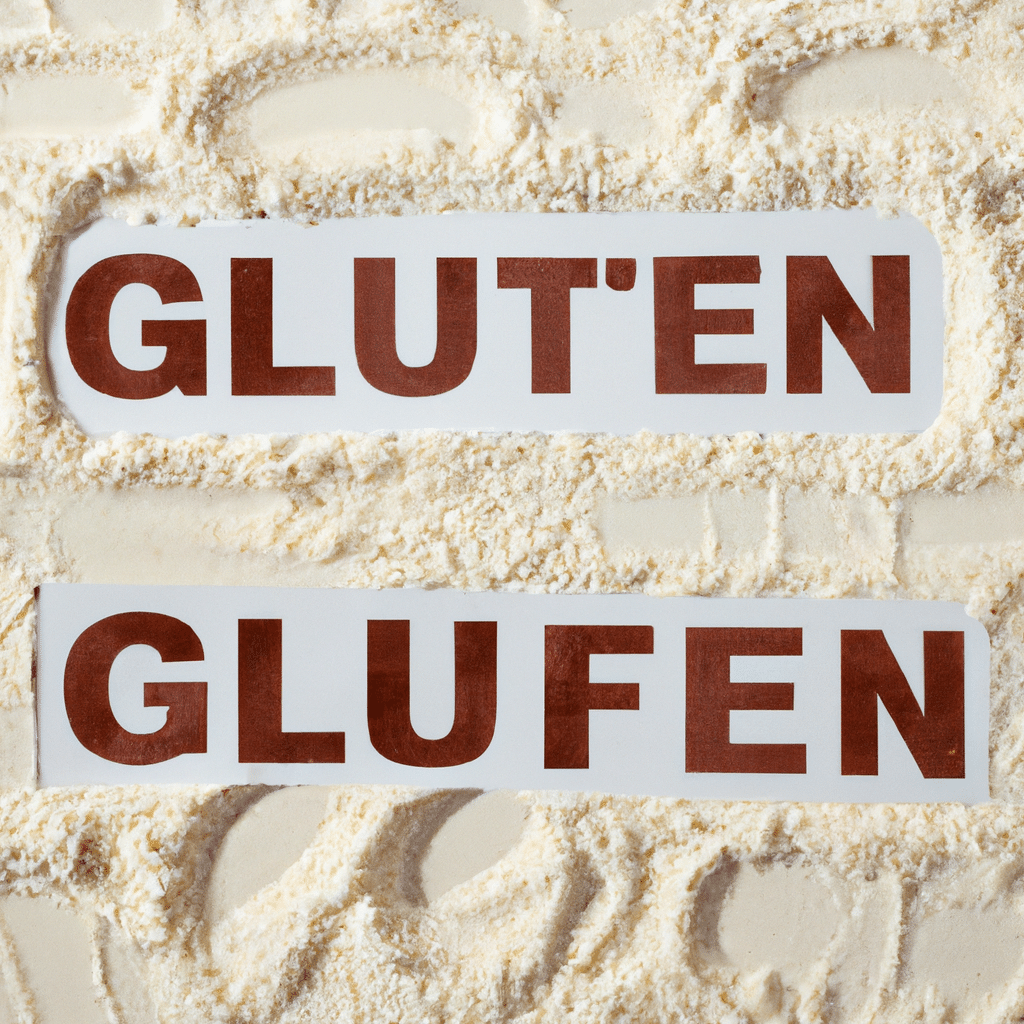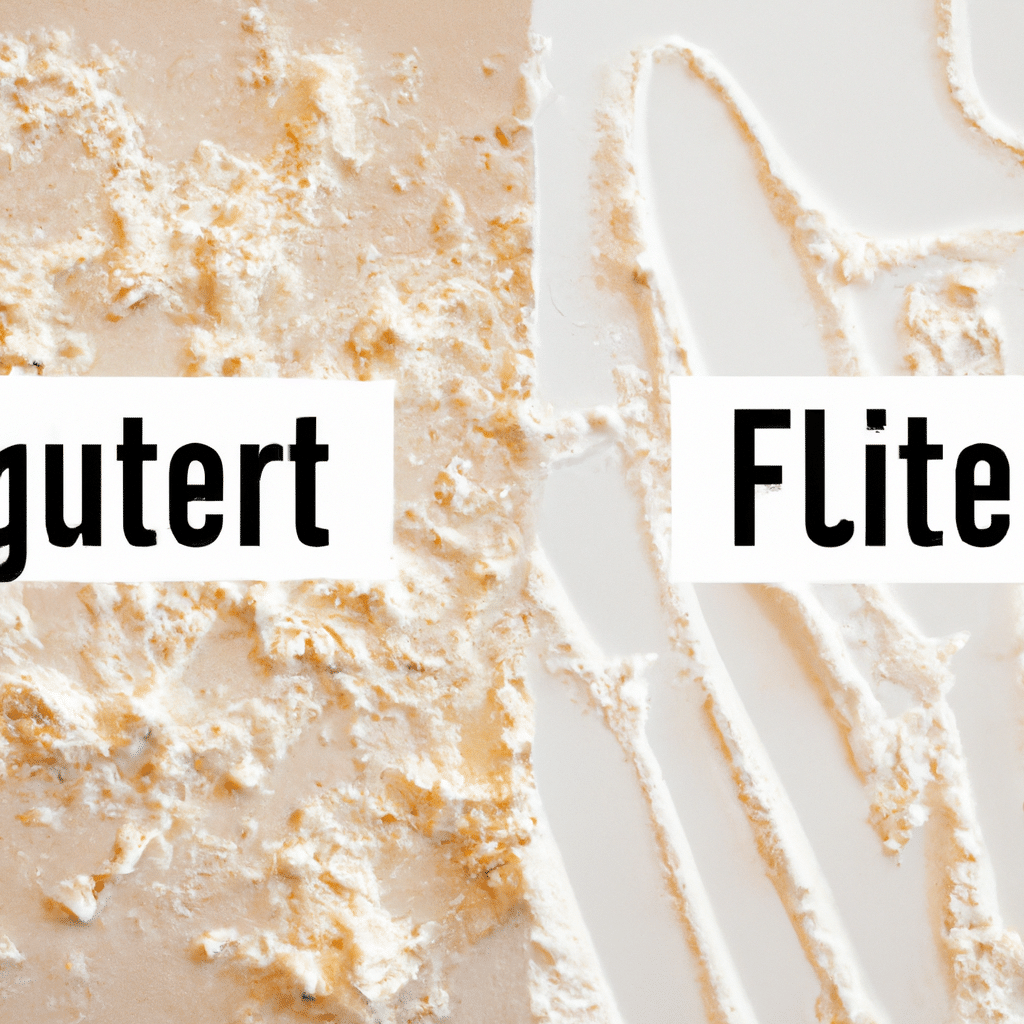When it comes to baking or cooking, flour is a crucial ingredient that often forms the base of many recipes. However, with the growing awareness of dietary restrictions and health concerns, the distinction between gluten-free and regular flour has become increasingly important. Understanding the difference between these two types of flour is essential for those with gluten sensitivities or celiac disease, as well as for individuals seeking to make healthier choices in their diet. In this article, we will delve into the characteristics, uses, and benefits of both gluten-free and regular flour, helping you make informed decisions in the kitchen.
- 1. Introduction
- 1.1. Definition of gluten
- 1.2. Importance of flour in cooking
- 1.3. Growing popularity of gluten-free diets
- 1.4. Overview of regular flour
- 1.5. Overview of gluten-free flour
- 2. Composition and Source
- 2.1. Composition of regular flour
- 2.2. Composition of gluten-free flour
- 2.3. Source of regular flour
- 2.4. Source of gluten-free flour
- 2.5. Differences in ingredients
- 3. Nutritional Value
1. Introduction
Gluten-free diets have gained immense popularity in recent years, with more and more people opting for gluten-free alternatives in their meals. Understanding the distinction between gluten-free flour and regular flour is essential for individuals who follow a gluten-free lifestyle or have gluten sensitivities. This article aims to shed light on the differences between these two types of flour and provide valuable insights into their usage and nutritional aspects. Whether you’re a food enthusiast, a chef, or someone looking to make dietary changes, this article will help you grasp the fundamental disparities between gluten-free and regular flour.
1.1. Definition of gluten
Gluten is a protein found in wheat, barley, and rye. It is responsible for giving dough its elasticity, allowing it to rise and maintain its shape. Gluten consists of two proteins, gliadin and glutenin, which combine to form a network that gives baked goods their structure and texture. However, some people have a sensitivity or intolerance to gluten, leading to various health issues. For these individuals, consuming gluten can cause digestive problems, inflammation, and damage to the small intestine. As a result, gluten-free diets have gained popularity as a way to manage these conditions and improve overall health.
1.2. Importance of flour in cooking
Flour is a versatile ingredient that plays a crucial role in cooking. It is a finely ground powder made from various grains, nuts, seeds, or roots. Flour is used in a wide range of recipes, including bread, cakes, pastries, and sauces. It provides structure, texture, and flavor to baked goods and helps bind ingredients together. Without flour, many of our favorite dishes wouldn’t exist.
Understanding the different types of flour is important, especially when it comes to dietary restrictions or preferences. One such distinction is between gluten-free flour and regular flour. Gluten-free flour is made from grains or other ingredients that do not contain gluten, a protein found in wheat, barley, and rye. Regular flour, on the other hand, contains gluten. This distinction is important for individuals with celiac disease or gluten sensitivity, as consuming gluten can cause adverse health effects.
In this article, we will delve deeper into the importance of flour in cooking and explore the differences between gluten-free and regular flour. By understanding these distinctions, you can make informed choices in your culinary endeavors and cater to various dietary needs.
1.3. Growing popularity of gluten-free diets
The growing popularity of gluten-free diets is a significant trend in the food industry. More and more people are adopting gluten-free eating habits due to health concerns or personal preferences. Gluten is a protein found in wheat, barley, and rye, and it can cause adverse reactions in individuals with celiac disease or gluten sensitivity. As a result, there is a rising demand for gluten-free products and alternative flours.
Gluten-free diets have gained traction not only among those with gluten-related disorders but also among people who believe it promotes overall well-being. Many individuals report experiencing benefits such as improved digestion, increased energy levels, and reduced inflammation after eliminating gluten from their diets. This has led to a surge in the availability and variety of gluten-free food options, including bread, pasta, snacks, and baked goods.
In response to the growing demand, food manufacturers and restaurants are investing in gluten-free alternatives to cater to a wider consumer base. The market for gluten-free products has expanded significantly, with an array of gluten-free flours now available in grocery stores. These flours, such as almond flour, coconut flour, and chickpea flour, offer alternatives to traditional wheat flour and allow people to continue enjoying their favorite foods while adhering to a gluten-free lifestyle.
Understanding the distinction between gluten-free and regular flours is crucial for those following a gluten-free diet. While regular flour contains gluten, gluten-free flours are made from grains, nuts, or legumes that do not contain gluten. These alternative flours have different textures, flavors, and nutritional profiles compared to regular flour.
In this article, we will explore the differences between gluten-free and regular flours, their uses in cooking and baking, and provide tips for successfully substituting one for the other. By understanding the nuances of gluten-free flour, individuals can make informed choices and create delicious gluten-free dishes without compromising on taste or texture.
1.4. Overview of regular flour
Regular flour, also known as all-purpose flour, is a versatile ingredient commonly used in baking and cooking. It is made from grinding wheat grains, specifically the endosperm, which is the starchy part of the grain. Regular flour contains gluten, a protein that gives dough its elastic and stretchy texture. This protein is responsible for the structure and rise of baked goods.
Regular flour is available in different forms such as bleached or unbleached, and enriched with additional nutrients like iron and folic acid. It is commonly used in a wide range of recipes, including bread, cakes, cookies, and pastries. Due to its gluten content, regular flour is not suitable for individuals with gluten intolerance or celiac disease.
Understanding the characteristics and uses of regular flour is essential for anyone interested in the world of baking and cooking. By exploring the distinctions between regular flour and gluten-free alternatives, we can make informed choices when it comes to selecting the right flour for our dietary needs and preferences.
1.5. Overview of gluten-free flour
Gluten-free flour has become increasingly popular in recent years, as more and more people are following a gluten-free diet. Gluten is a protein found in wheat, barley, and rye, which can cause adverse reactions in individuals with gluten sensitivity or celiac disease. As a result, there is a growing demand for gluten-free alternatives to regular flour.
Gluten-free flour is made from various grains, seeds, or nuts that do not contain gluten. Common gluten-free flours include rice flour, almond flour, coconut flour, and tapioca flour. These alternative flours can be used as a substitute for regular flour in a wide range of recipes, including bread, cakes, and pastries.
One of the key challenges of baking with gluten-free flour is achieving the same texture and taste as traditional flour-based products. Gluten provides elasticity and structure to baked goods, so it is necessary to use alternative binding agents and additives in gluten-free baking. Xanthan gum and guar gum are commonly used to improve the texture and binding properties of gluten-free dough.
It is important to note that not all gluten-free flours are created equal. Each type of gluten-free flour has its own unique properties and characteristics. Some flours may be better suited for certain recipes, while others may have a more distinct flavor or texture. Experimentation and a bit of trial and error may be required to find the right gluten-free flour for a specific recipe.
In conclusion, gluten-free flour offers a viable solution for individuals who need to avoid gluten in their diet. With a wide range of options available, it is possible to create delicious and satisfying gluten-free baked goods. However, it is important to understand the distinctions between gluten-free and regular flour, as well as the unique properties of each type of gluten-free flour.
2. Composition and Source
When it comes to baking, the choice of flour plays a crucial role in the outcome of the final product. Understanding the distinction between gluten-free and regular flour is essential for individuals with gluten sensitivity or celiac disease. Gluten-free flour is specially formulated to be free of gluten, a protein found in wheat, barley, and rye. It is often made from alternative grains, such as rice, corn, or tapioca. On the other hand, regular flour contains gluten, which gives baked goods their characteristic texture and structure. It is typically made from wheat or a combination of wheat and other grains. Knowing which type of flour to use in different recipes is important to achieve the desired results. By making informed choices, individuals can enjoy delicious gluten-free alternatives or stick to traditional baking methods.
2.1. Composition of regular flour
Regular flour is typically composed of wheat grains that have been ground into a fine powder. It contains gluten, which is a protein that gives dough its elasticity and allows it to rise when baked. The main components of regular flour include carbohydrates, protein, fat, and minerals such as iron and calcium. The composition may vary slightly depending on the type of wheat used and any additional additives or fortifications. Regular flour is commonly used in a wide range of baked goods and is the go-to choice for most traditional recipes.
2.2. Composition of gluten-free flour
Gluten-free flour is a blend of various alternative flours that do not contain gluten. It is specifically designed for individuals who have gluten intolerance or celiac disease. The composition of gluten-free flour can vary depending on the brand and the specific needs of the consumer. However, some common ingredients found in gluten-free flour blends include rice flour, almond flour, tapioca starch, potato starch, and sorghum flour. These ingredients are carefully selected to mimic the texture and taste of regular wheat flour while providing a safe and delicious alternative for those who cannot consume gluten. Gluten-free flours can be sourced from specialty stores, health food stores, or online retailers that cater to individuals with dietary restrictions.
2.3. Source of regular flour
Regular flour is a common staple in many households and is widely used in various recipes and culinary applications. It is typically made from grinding wheat grains and is known for its gluten content. Gluten is a protein that gives regular flour its elastic and stretchy properties, making it ideal for baking bread and other baked goods.
The main source of regular flour is wheat, although it can also be made from other cereal grains such as rye or barley. Wheat flour is the most commonly used type and is categorized into different varieties based on its protein content. These include all-purpose flour, bread flour, cake flour, and pastry flour.
All-purpose flour is the most versatile type and is suitable for a wide range of recipes, including bread, cakes, cookies, and pastries. Bread flour has a higher protein content, which gives it a stronger structure and is ideal for making yeast bread. Cake flour, on the other hand, has a lower protein content and results in a more tender and delicate texture, making it perfect for cakes and muffins. Pastry flour has a medium protein content and is commonly used in pie crusts and pastries.
In addition to wheat, regular flour may also contain other ingredients such as malted barley flour, niacin, iron, thiamin mononitrate, riboflavin, and folic acid. These additives are often added during the milling process to enrich the nutritional value of the flour.
Overall, regular flour is a versatile and widely available ingredient that plays a crucial role in traditional baking and cooking. Its gluten content provides the necessary structure and texture to various dishes, making it a go-to choice for many recipes.
2.4. Source of gluten-free flour
Gluten-free flour is becoming increasingly popular as more people are adopting gluten-free diets due to gluten intolerance or celiac disease. It is important to understand the composition and sources of gluten-free flour in order to make informed choices when it comes to baking and cooking.
Gluten-free flour is typically made from alternative grains, nuts, or legumes that do not contain gluten proteins. These flours are often a combination of different ingredients to mimic the properties of regular flour. Some common sources of gluten-free flour include rice, almond, coconut, tapioca, sorghum, and chickpea.
Rice flour is one of the most common gluten-free flours and is widely available. It is made from finely milled rice grains and is often used as a substitute for all-purpose flour. Almond flour, on the other hand, is made from blanched almonds that are ground into a fine powder. It has a slightly sweet and nutty flavor, making it a popular choice for baking.
Coconut flour is made from dried coconut meat that is ground into a powder. It has a unique flavor and adds moisture to baked goods. Tapioca flour, also known as tapioca starch, is derived from the cassava root. It is often used as a thickening agent and provides a chewy texture to baked goods.
Sorghum flour is made from the whole grain sorghum and has a mild flavor. It is often used in combination with other gluten-free flours to improve texture and taste. Chickpea flour, also known as gram flour or besan, is made from ground chickpeas. It has a slightly nutty flavor and is commonly used in Indian cuisine.
In conclusion, gluten-free flour is a versatile alternative to regular flour for those following a gluten-free diet. Understanding the composition and sources of gluten-free flour can help in choosing the right flour for specific recipes and achieving desired results in gluten-free baking and cooking.
2.5. Differences in ingredients
Gluten-free and regular flour differ significantly in terms of their ingredients and composition. The primary distinction lies in the presence or absence of gluten, a protein found in wheat and other grains. Regular flour contains gluten, which gives the dough elasticity and helps it rise during baking. On the other hand, gluten-free flour is made from alternative grains or legumes that do not contain gluten, such as rice flour, almond flour, or chickpea flour.
The composition of regular flour typically includes wheat or a mixture of grains like wheat, barley, and rye. These grains are milled to produce the fine powder we commonly know as flour. In contrast, gluten-free flour can be derived from various sources, depending on the manufacturer’s choice. Some common sources for gluten-free flour include rice, corn, tapioca, potato, and even nuts.
Understanding the differences in ingredients and composition between gluten-free and regular flour is crucial for individuals who follow a gluten-free diet due to gluten intolerance or celiac disease. By choosing the appropriate flour, one can create delicious gluten-free alternatives to traditional baked goods without compromising taste or texture.
3. Nutritional Value
When it comes to understanding the distinction between gluten-free and regular flour, it is essential to consider their nutritional value. Regular flour is typically made from wheat, which contains gluten, a type of protein that can cause an adverse reaction in individuals with gluten intolerance or celiac disease. On the other hand, gluten-free flour is made from alternative grains or starches, such as rice flour, almond flour, or tapioca flour, which do not contain gluten.
In terms of nutritional value, regular flour is a good source of carbohydrates, proteins, and certain vitamins and minerals. It provides energy and can be a part of a balanced diet for individuals without gluten sensitivities. However, for those who need to avoid gluten, gluten-free flour offers a suitable alternative. Although gluten-free flours may lack some of the nutrients found in regular flour, they can still be nutritious depending on the specific grain or starch used.
It is important to note that gluten-free flour may need additional ingredients or additives to achieve similar baking properties as regular flour. Some gluten-free flours may require the addition of xanthan gum or guar gum to improve texture and elasticity. Additionally, gluten-free flours may have a different taste and texture compared to regular flour, which can impact the final outcome of baked goods.
In conclusion, understanding the nutritional value of gluten-free and regular flour is crucial when making dietary choices. Regular flour provides various nutrients but contains gluten, which can be problematic for some individuals. Gluten-free flour, although it may lack certain nutrients, offers a suitable alternative for those with gluten sensitivities. It is important to consider the specific grain or starch used in gluten-free flour and any additional ingredients required for optimal baking results.
3.1. Nutrients in regular flour
Regular flour is a staple ingredient in many recipes and provides a significant amount of nutrients. It is primarily composed of carbohydrates, which are essential for energy production. Regular flour contains various vitamins and minerals, including B vitamins like thiamine, riboflavin, and niacin, which play a crucial role in metabolism. Additionally, regular flour is a good source of iron, which is important for oxygen transport throughout the body. This type of flour also contains small amounts of calcium, potassium, and magnesium, which are necessary for maintaining healthy bones and muscles. However, it’s important to note that regular flour may not be suitable for individuals with gluten sensitivity or celiac disease, as it contains gluten protein.
3.2. Nutrients in gluten-free flour
Gluten-free flour offers a range of nutrients that are important for overall health. Despite the absence of gluten, which is a protein found in regular flour, gluten-free alternatives can still provide essential vitamins and minerals. One important nutrient found in gluten-free flour is fiber. Fiber is crucial for maintaining a healthy digestive system and can help regulate blood sugar levels. Additionally, gluten-free flour often contains higher levels of essential minerals such as iron, calcium, and potassium. These minerals are vital for various bodily functions, including bone health, muscle contraction, and nerve transmission. Furthermore, gluten-free flour can be a good source of B vitamins, including thiamine, riboflavin, and niacin, which are necessary for energy production and maintaining a healthy metabolism. Overall, while gluten-free flour may lack gluten, it can still offer a diverse range of nutrients that contribute to a balanced diet.
3.3. Comparison of nutritional value
The nutritional value of gluten-free flour and regular flour can vary significantly. Gluten-free flour is typically made from alternative grains or legumes, such as rice, almond, or chickpea flour. These flours are naturally gluten-free and do not contain the protein called gluten, which is found in regular flour. Regular flour, on the other hand, is made from wheat and contains gluten.
In terms of calories, both gluten-free flour and regular flour have similar values. However, the composition of other nutrients differs between the two. Regular flour is higher in protein content, as gluten is a protein. It also contains higher amounts of iron and B vitamins.
Gluten-free flour, on the other hand, tends to have higher fiber content compared to regular flour. It is also often enriched with additional nutrients to compensate for the lack of gluten. Some gluten-free flours may contain higher levels of certain minerals like calcium and magnesium.
It is important to note that the nutritional value may vary depending on the specific brand and type of flour. It is always recommended to check the nutrition labels for accurate information.
Overall, understanding the distinction in nutritional value between gluten-free flour and regular flour can help individuals make informed choices based on their dietary needs and preferences.
3.4. Benefits of regular flour
Regular flour, also known as all-purpose flour, offers several benefits in terms of nutrition. It is a good source of carbohydrates, providing energy to the body. Regular flour also contains essential vitamins and minerals, such as iron, calcium, and B vitamins. These nutrients play a vital role in maintaining overall health and well-being.
Regular flour is also enriched with folic acid, which is important for pregnant women as it helps in the development of the baby’s neural tube. Additionally, regular flour is often fortified with additional nutrients, making it a more nutritious option.
Including regular flour in your diet can help in maintaining a healthy weight. It provides a feeling of satiety, preventing overeating. Regular flour can also be easily incorporated into various recipes, making it a versatile ingredient for cooking and baking.
However, it is important to note that regular flour contains gluten, which can be problematic for individuals with gluten sensitivity or celiac disease. In such cases, gluten-free flour alternatives should be considered to avoid any adverse reactions.
Overall, regular flour offers several nutritional benefits and can be a part of a balanced diet, as long as it is consumed in moderation and does not pose any health risks based on individual needs and dietary restrictions.
3.5. Benefits of gluten-free flour
Gluten-free flour offers various benefits, especially for individuals with specific dietary needs or health conditions. By understanding the nutritional value of gluten-free flour, one can better appreciate its distinct advantages.
Gluten-free flours are typically made from alternative grains or starches such as rice, corn, almond, tapioca, or coconut. These flours are free from gluten, a protein found in wheat, barley, and rye, which can cause adverse reactions in people with gluten sensitivity, celiac disease, or wheat allergies.
One of the primary benefits of gluten-free flour is that it allows individuals with gluten-related disorders to enjoy a wide range of baked goods and other dishes without experiencing digestive discomfort or other symptoms. Additionally, gluten-free flours often contain higher amounts of nutrients like fiber, vitamins, and minerals compared to regular wheat-based flours. This can be especially beneficial for those following a gluten-free diet, as it ensures they still receive essential nutrients in their meals.
Moreover, gluten-free flour can be an excellent option for individuals looking to diversify their diets or explore different culinary possibilities. It offers a unique flavor profile and texture, allowing for the creation of new and exciting recipes. Furthermore, using gluten-free flour can contribute to a healthier lifestyle by reducing the consumption of refined grains and promoting the inclusion of alternative whole grains.
In conclusion, the nutritional value of gluten-free flour makes it a valuable option for individuals with gluten-related disorders or those seeking to incorporate alternative grains into their diets. Its ability to provide a wide variety of baked goods and its potential to enhance overall health and culinary experiences make it a worthwhile choice for many.
Conclusion
In conclusion, understanding the distinction between gluten-free and regular flour is essential for individuals with gluten sensitivities or celiac disease. While regular flour contains gluten, which can cause adverse reactions in certain individuals, gluten-free flour provides a safe alternative. It is important to carefully read labels and choose the appropriate flour for specific dietary needs. By making informed choices, individuals can enjoy a wide range of delicious gluten-free options without compromising their health.





